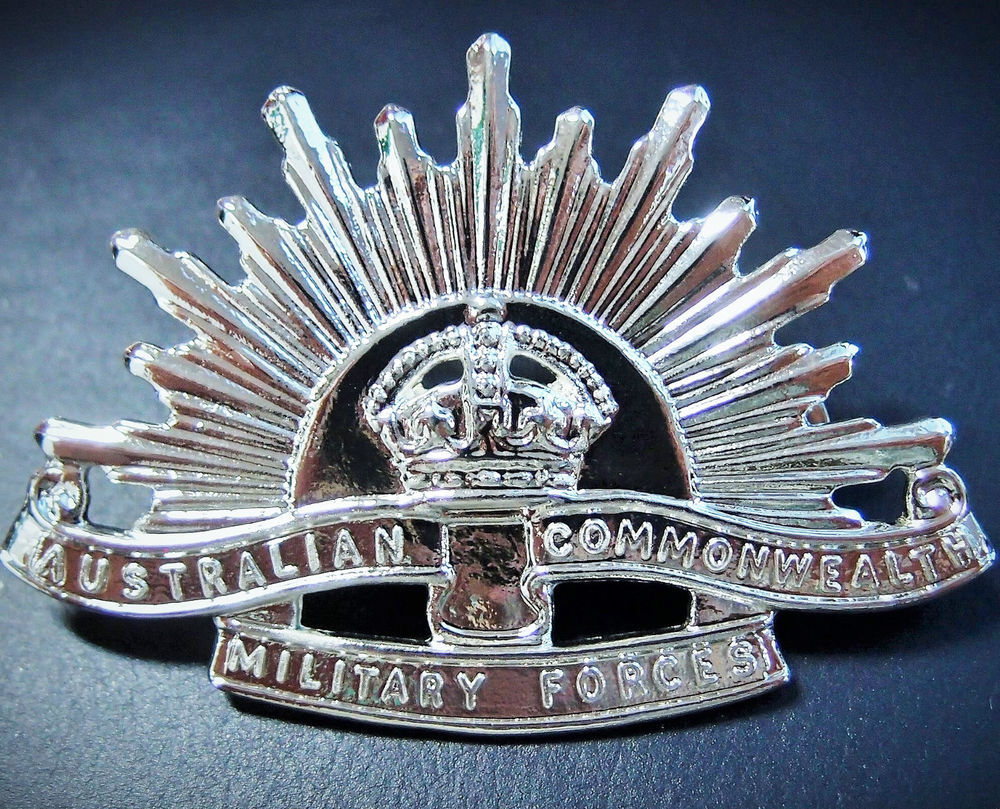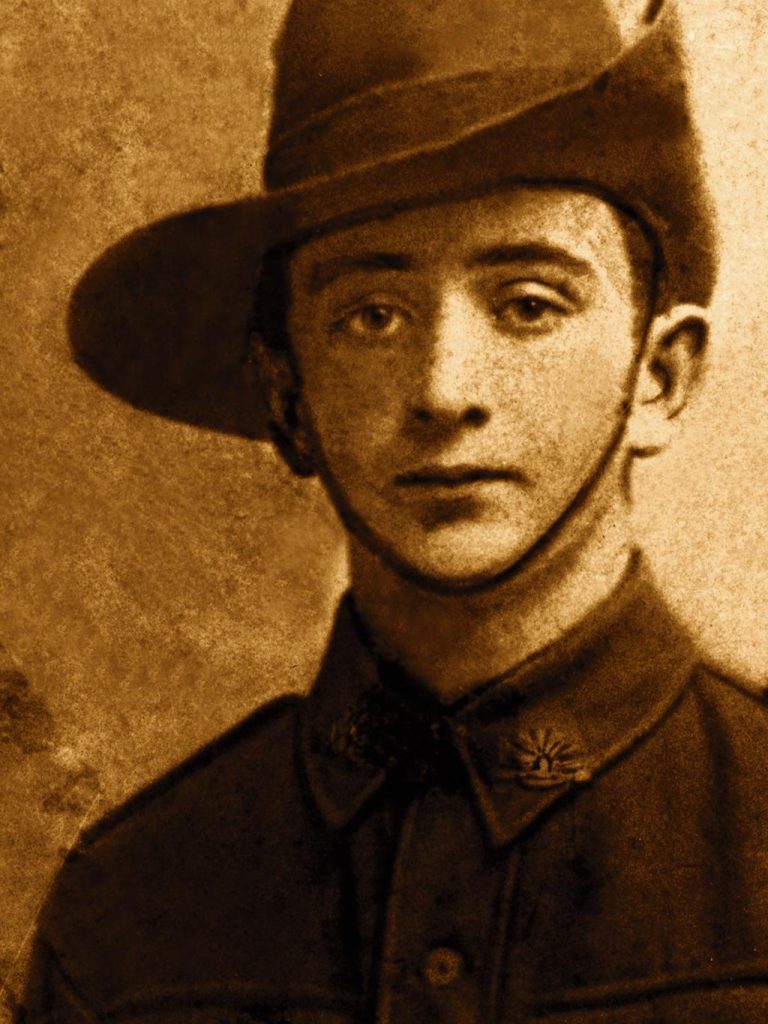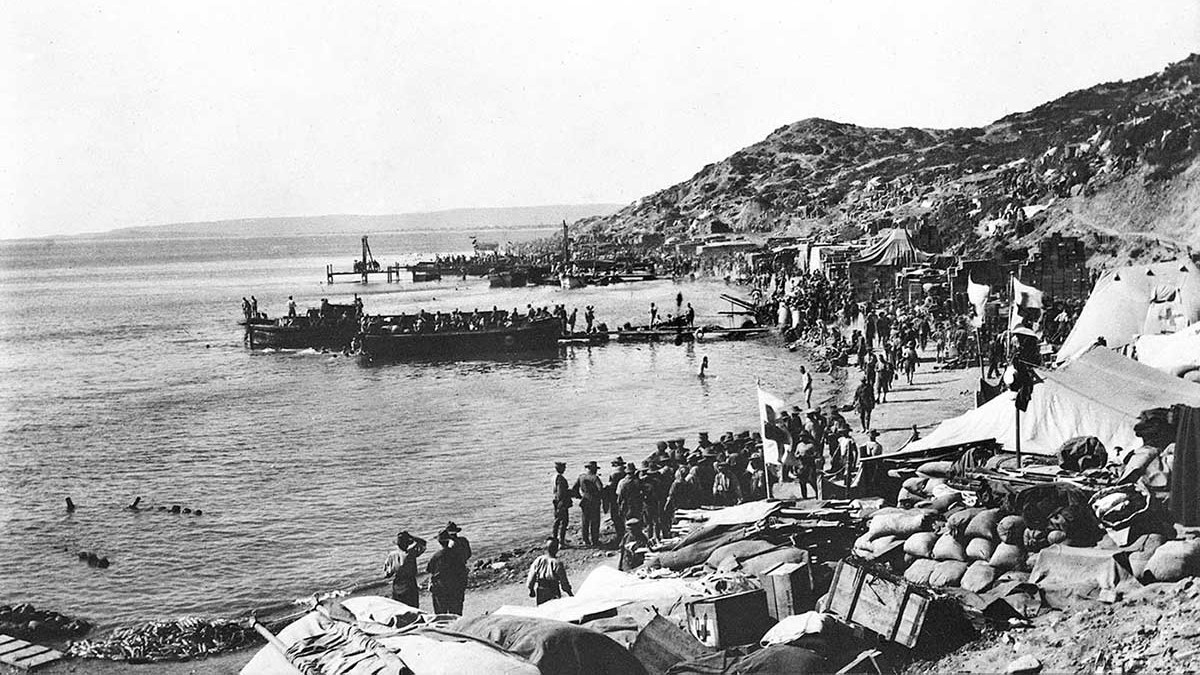By Steve Kyritsis OAM.
Sunday, April 25 in 1915 at 4am, 600 yards offshore, the troop ship GALEKA had just anchored as dawn began to break over the landing beaches at Gallipoli. It is fair to say things did not go as planned, with poor communications between commanders and perhaps poor timing of the landing.
The boats which had landed were supposed to have returned back to their waiting ships and collect the others, but did not arrive back until late. A heated argument broke out between the commander of the 7th Battalion and the ships Officers who wanted the soldiers to board the GALEKA’s lifeboats and head to the shore.
At 5am, the troops began clambering down rope ladders and scrambling nets into the boats. As the morning progressed and the sun rose higher, the enemy fire increased towards the Australians, with rapid machine gun and artillery fire towards the Australians, men were shot dead in their hundreds in their boats, and many drowned, even before setting foot ashore.
At shore, the situation was even more chaotic as the original plans were discarded, and new orders were rapidly given to each Company unit, as it landed.
But how had it come to this? What were the newly created Australian & New Zealand Army Corps (ANZACs) doing launching an amphibious landing on the Dardanelles Peninsula in Turkey? To answer that it is necessary to go back earlier, nearly six months, to two unrelated events which would eventually result in the name Gallipoli becoming renowned to all Australians and New Zealanders.
As the convoy carrying Australian and New Zealand troops was making its way across the Indian Ocean in November 1914, war had been declared by Great Britain on the Ottoman Empire. At the same time in England, the Canadian Expeditionary Force began training on Salisbury Pain, exactly where the Australia Imperial Force (AIF) was supposed to be based. So with nowhere for the 30,000 men from Australia and New Zealand to be billeted in England and a new threat in the Middle East, the convoy soon found itself sailing through the Suez Canal and docking at Alexandria, Egypt for training.

Several months of training would follow, as a first assault on Turkey and eventually an amphibious landing, was planned.
With the Western Front in stalemate by early 1915 and Russia in desperate need of assistance, a second front was seen as critical. If the Turks could be knot out of the war several benefits would accrue. Any threat to Egypt and the Suez Canal would be removed. So what had first been a faint idea in the mind of the first Lord of the Admiralty Winston Churchill, had become a reality by early February.
On February 19, the French and British Navies bombarded the Turkish forts at the mouth of the Dardanelles, and a month later on March 18 an even more serious assault was made. It was a disaster. Three battleships were sunk, three more badly damaged and 700 casualties sustained. The navy would not risk any more ships.
“The forts which covered the Dardanelles would have to be taken by ground Forces.”
Through the ground Forces, it would allow the navy unhindered passage into the sea of Marmara where they would bombard Constantinople and, it was believed, to force the Turks to pursue for peace.
So in April, the ANZACs boarded troopships once again and left Egypt bound for the Greek island of Lemnos, 50 kilometres from Gallipoli.
As first to land, the 3rd Brigade, known as the “All Australian” troops that came from Queensland, South Australia, Western Australia, and Tasmania, had been training on Lemnos for a month. Also there were the 3rd Field Ambulance and the 1st Australian Casualty Clearing Station.
The landing at Gallipoli on April 25 by the Australians was a complete disaster with over 2,000 killed in the first 24 hours.

So what were the Australian casualties of Gallipoli? From April until December 1915, the Australians lost 8,200 men killed and thousands more injured. New Zealand lost 2,800 men.
In the nine month period, the ANZACs and the Allies were only able to capture a small area at Gallipoli.
“However, for all Australians and New Zealanders, the ANZAC legacy is still with us today.”
ANZAC Day in Australia is the most commemorative event, with thousands attending dawn services and marches.
Notes:
- In the First World War, all men were volunteers and their age had to be 18 years old to enlist. But we do know many young men enlisted as young as 16 and 17 years old. These young men joined the Army to travel overseas for adventure and did not see it as a war.
- The youngest Australian to enlist and die was James Martin, age 14 years old. Born in Tocumwal, NSW, he lied about his age, landed in Gallipoli at the age of 14 and three months old, and died through sickness at the age of 14 and nine months old. At the time of his death, only his parents and one of his friends knew his true age.
- Total Australians served in World War One was 330,000, with 60,000 deaths.
- In World War One, 80 Greek Australians served in the Australian Forces, 10 killed and 27 wounded in action.
We will remember them. Lest We Forget.

